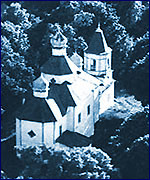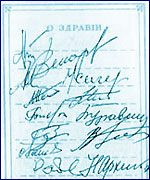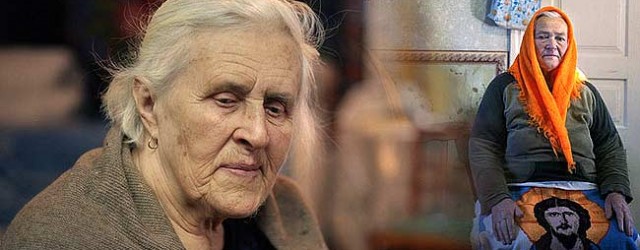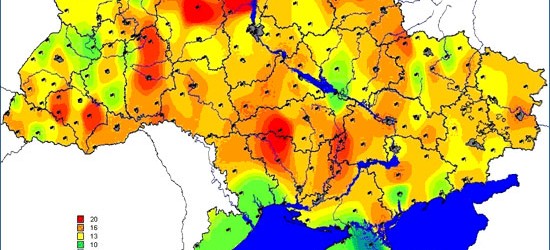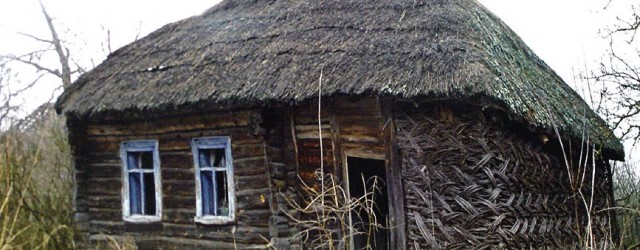
Ancient history of the Chernobyl’s area. Contemporary Photographs of Chernobyl on the page “Town of Chernobyl“.
Chernobyl during the Kiev Russia
The north and northwestern territory of the ancient Duchy of Kiev, according to certificates of ancient annals, in the tenth century was already covered by a dense network of cities, feudal castles and settlements. Populations were located, to a greater degree, along the banks of the rivers Pripyat, Teterev, Irpen and Uzh. In the annals are the names of settlements, in particular Ovruch, Rilsk, Semoch and others. Among this cohort of historical settlements was the powerful place, Chernobyl.
The first mention of the city of Chernobyl has been found in the Ipatevskoy annals, which it states that in 1193, Rostislav hunted near the city of Chernobyl. “Prince Vyshgorodsky and Rostislav Turovsky, son of the Gretaer Prince of the Kievan Rus, were traveling and fishing from Chernobyl to Tortsiyska.” In addition, the Lawrentievskoy annals describes the historic march of Princes in 1127, through the city of Strezhiv, which was the southernmost city of the Polotsk princedom, and was on guard from ancient Kiev. This is confirmed by historian Lawrence Pohilevich in his “Legend of the Kiev province populated areas” (published in 1864).
There are indications that even at the end of the XIX century, on the ground Strezheva could see a strengthening of land, tunnels, trenches and mounds preserved since the days of the Kiev Russia. In one of the burial mounds, called Tatar, was found arms and a treasure of silver jewelry and bronze decorations, XII and XIII century art. In this regard, researchers of the history of the city of Chernobyl have concluded that the reference to Chernobyl in the Ipatevskoy annals is nothing but a memory of the renamed city of Strezhev.
There are other hypotheses about the emergence of Chernobyl. The name of the city of Chernobyl comes from the word “mugwort” – since ancient times through today it has been called wormwood, which is growing in the vicinity of Chernobyl.
Chernobyl during the Mongol-Tatar invasion
The ancient city of Chernobyl has historical events connected to the Mongol-Tatar invasion, Lithuanian and Polish rule.
So, a XIII century battle of the incorporated Lithuanian-Ukrainian army and Tatars took place in the area of confluence of the Pripyat and Dnepr rivers. The Tatar-Mongolian army, led by military commander Kaydan-Batyya, was completely broken and Kaydan miraculously escaped. According to historians, it was the first victory for Russia against the Mongol-Tatars.
Figure – Malorosii map, which was drafter in the early 17th century by famous traveller Boplan. At that time, Malorosiya was under the ownership of Poland.
In 1569, after the signing of the Lublin agreement between Lithuania and Poland, Chernobyl was removed from the possession of Poland. Authority over the city passed into the hand of the dynasty of Sapegov gentry.
The Emancipating war 1648-1654 did not spare the Ukrainian people or Chernobyl lands. As a result, these territories repeatedly changed hands. A Kiev rebel army regiment under the command of Bogdan Khmelnitsky A. Zhdanovicha also visited Chernobyl.
Conservatives and Old Believers in the history of the Chernobyl Area
In the XVIII century, a community of conservatives found refuge in these territories. In the increasingly impassable forests, they built monasteries where they were free to pray to their gods. Even now, in the central part of the exclusion zone can be found remnants of ancient conservative settlements. It is called “Site of ancient settlement.” The site of ancient settlement is a plot territory, enclosed by two embankments. These earthworks are well identified. Presently, historical and cultural research of this settlement are being conducted.
Conservatives lived in the city of Chernobyl. So, in the book “Reporting from Chernobyl” (authors A.B. Illesh and A.E. Parlnikov) it states that in the second half of the 17th century, conservatives settled in Chernobyl. Later, they began a sect called the “Chernobyl“. The sect leader, Illarion Petrov, had a strange nickname, “Cow Legs” and was marked by extreme fanaticism. The sect preached the coming of the Antichrist and the rapid arrival of the end of the world. Interestingly, the Chernobyl sectarians later moved to Austria (at the end of the 18th century). The sectarians were personally invited by the Austrian emperor Josef II, who even freed them from taxes for the next twenty years (after relocation).
Conservatives who remained in Chernobyl later founded a few settlements in the Chernobyl area. Zamoshnya, Krasilovka, Bychki – conservatives lives in these settlements until 1986.
In Chernobyl in 1775, a settlement of dissenters from Starodubya was founded. The dissenters had their own church named St. Phillipe – Metropolitan of Moscow. At the church was a man’s monastery.
During mass revolts of the Ukrainian people against the Polish gentry, which occurred several times in the Right-bank of Ukraine, Chernobyl was twice captured (in 1747 and 1751) by rebel militias, which brutally massacred the Polish gentry. Retaliatory groups headed by Sir Matskevich, with fire and sword marched across the terrain in the area of the Teterev and Pripyat rivers.
The Pripyat River held an important role in the lives of inhabitants of Chernobyl – she was their mother. Due to low land productivity, most residents of Chernobyl were fishermen. These people also harvested hay, wood and peat, as well as collecting mushrooms and berries.
The most widespread work was fishing, hunting, beekeeping (apiculture) collecting. Developments included folk crafts and crafts – pottery businesses, weaving, wood, steel and iron processing, leather processing, weaving, stone processing, fishing, etc.
Greater tests for a share of Chernobyl fell in relation to the persecution of language culture, conducted Catholic population, happened particularly during the tenure of the Polish gentry in the town. It is known that in the year 1600, a Roman Catholic Church was based in Chernobyl, and later was created a Dominican monastery.
Chernobyl Jewish and Orthodox
In 1749 in the town of Chernobyl, the Radomyshlskaya consistory began construction of the first Illinskaya orthodox church. Construction of the wooden church was completed in 1779. In 1873 the wooden church burned down and in its place was built a stone church. This church currently exists in the city and holds worship services. In the Chernobyl Exclusion Zone used to exist the Resurrection Church, which was built in the XVII century in the village of Tolstoy Les. In 1996 the church completely burned down.
Memories of the town of Chernobyl even exist in the history of France. During the Jacobinic dictatorship, the Chernobyl native, 26 year old Rozaliya Lyubomyrskaya-Hodkevich was executed on a guillotine in Paris on June 30, 1794. She was accused of having links to Marie Antoinette and other members of the royal family.
Although the history of Chernobyl in the mid-XVIII century was engulfed in flames and popular uprisings, this period is particularly characterized by significant cultural and economic development of the city.
In the XIX century, businesses began developing and schools and medical facilities were built. In 1855, the first parish school opened and the teacher was a deacon. He taught children in their own homes, since a school building did not exist. Approximately four thousand Jews lived in Chernobyl at this time, more than two thousand Orthodox and 600 dissenters. Also at this time, approximately one hundred Roman Catholics lived in Chernobyl. At that time, Chernobyl had five synagogues, three Orthodox churches and another church. Chernobyl‘s first school opened in 1880 for 60 students. The school was provided for by the parents of students.
At the turn of the XIX-XX centuries, approximately 17,000 people lived in Chernobyl in approximately 2,000 homes (although, admittedly, other population figures exist for Chernobyl at that time. For example, Pohilevich specifies figures 2 times lower than this).
One of the unique ancient structures in the territory of the modern Chernobyl Exclusion Zone, as noted above, was the Resurrection Church in the village of Tolstoy Les. The Resurrection Church was built in 1760 in the center of the village. The church was wooden, three-felling with the belltower attached in the west. The church had three domes. The central dome had windows for illumination, while the other domes were completely enclosed. In the church were XIX century paintings. In 1897 were added to the belltower, a two-tier belfry.
The church was built in the Ukrainian Baroque style. After the Chernobyl accident and evacuation, the church was plundered by looters. On April 24, 1996, almost 10 years after the accident, the Resurrection Church burned. Unfortunately, this architectural monument is lost forever …
One of the most interesting and least-studied places in the Chernobyl Exclusion Zone is the remnants of old Slavic settlements. Currently, the location of this settlement is assumed due to the presence of residual embankments. It is believed that this ancient settlement relates to milogradskoy culture of the early iron era (VII-III century BC). The town was built on an island in the middle of impassable swamps. Remnants of the embankments, especially the external embankment, are very well identified today, even after two and a half thousand years.
Other historical and cultural sites of the Chernobyl Exclusion Zone and the city of Chernobyl are presented in the photographs below:
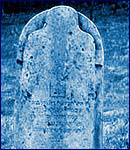 |
 |
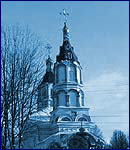 |
| Lapidary stone monuments from the 19th century in the Jewish cemetery in the town of Chernobyl. | The church in the village of Krasne | St. Elias Church in the town of Chernobyl |
Reference:
- Ipatiy annals (published 1908). Kiev annalistic code. In summer 6699 [1191] – in summer 6703[1195].
- Old Chernobyl history. Article of D.Kulynnik “The secret of wolf nooks”. – “Politic and cultrura”. 1-7 may 2001. №16 (99).


